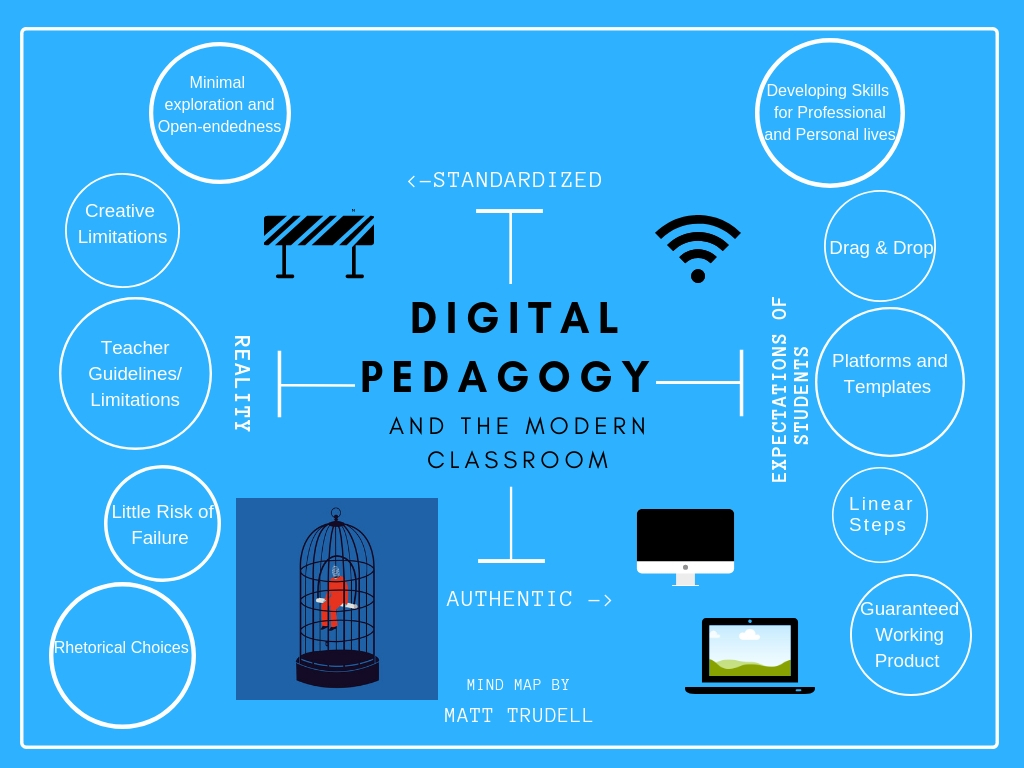Well folks, here we are, rounding out our last semester at the Faculty of Education, eager to begin our professional careers. Now, if we were to jump in our Delorean with Marty and Doc Brown, we would surely be met with an extremely daunting and tedious task of acquiring and locating the physical resources we would need to write out (the horror!) our lesson plans and activities. Luckily, OER is here! What would be an unknown acronym to most, is a glimmer of hope to those of us who are just getting our feet wet in the classroom. Open Educational Resources. Say it out loud… beautiful, isn’t it? Void of copyright laws, business models and practices that restrict us from accessing the ideal learning materials, Open Educational practices allow access to copy and share without breaking any laws! Open educational resources allow the full technical power of the internet to be brought to bear on education. Not only that, OER’s are subjected to continuous quality improvement.
Which leads me to our third and final Multimedia reflection. We analyzed the Technologist Module; an open PD module of Ontario Extend provided free of charge from eCampus Ontario. Initially created for the Northern Building project, it was a collaborative approach to build knowledge, further develop skills and share resources that support the technological educational initiatives of the institutions. Of the six available modules, the Technologist provides information to incorporate technology tools and platforms to address specific learning challenges.
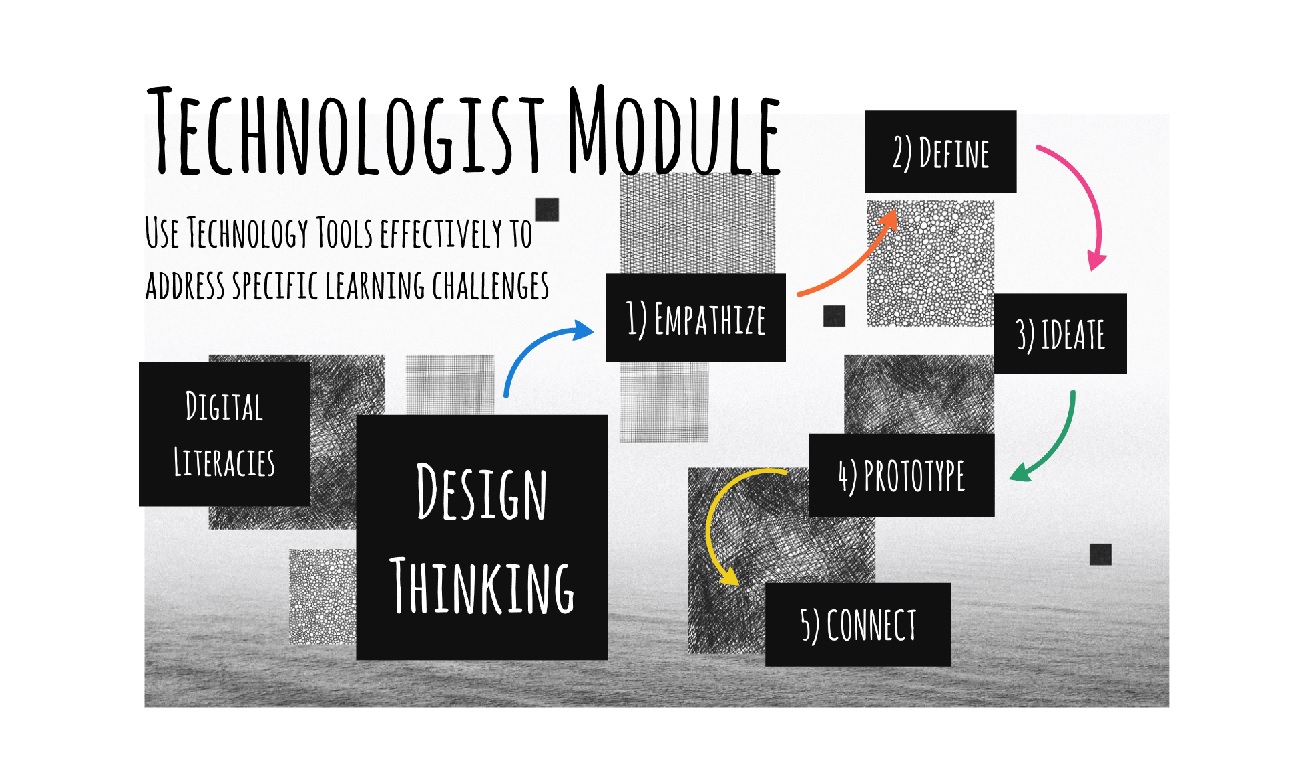
I have chosen to use a technological platform that I thought to be appropriate for the given content we were exploring. Prezi is something I have used a few times in my own instruction, seeing differing results based on students’ perceived levels of retaining and thoroughly understanding the material provided. Perhaps my presentation approach was not the correct technological tool that would support and enrich my students’ learning experiences for the given subject or method of delivery? Yes, I have succumbed to the comforts of familiarity and I am a glaring example of what many educators (in my brief experience) choose to do. Alas, have no fear, The Technologist module affords all educators with valuable information on how they can use the right tools effectively, addressing all specific learning challenges and learners’ needs, improving digital literacies in the process.
Students are preparing to enter a workforce which differs significantly from 20, even 10 years ago. As educators, we must provide students with the appropriate tools and knowledge to thrive in the 21st century work environment. While technological skills are not everything; an individuals digital literacies can significantly enhance their level of success, and overall life experience.
It is imperative that we look to share as much of our own personal learning through teaching experiences and communications with other educators to provide a greater learning experience for all students. Reasons for this would be; more available lesson plan resources, professional development modules such as those offered by Ontario Extend, and creating connections in educational corners across the globe to name a few. We are all creating lesson and activity materials that are new and exciting for you and your learners, why not share that with the rest of the world?

 and better grades.
and better grades.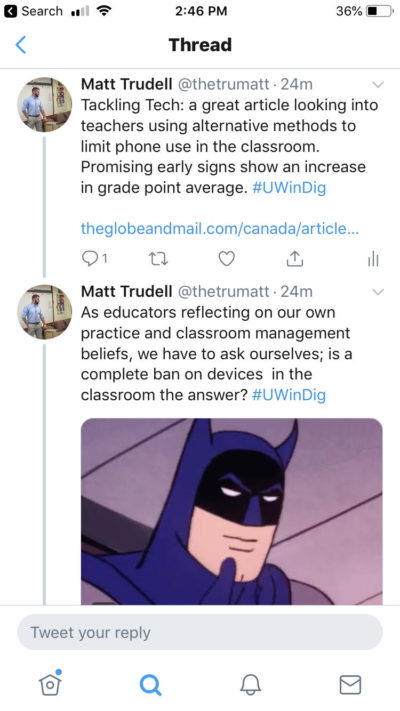
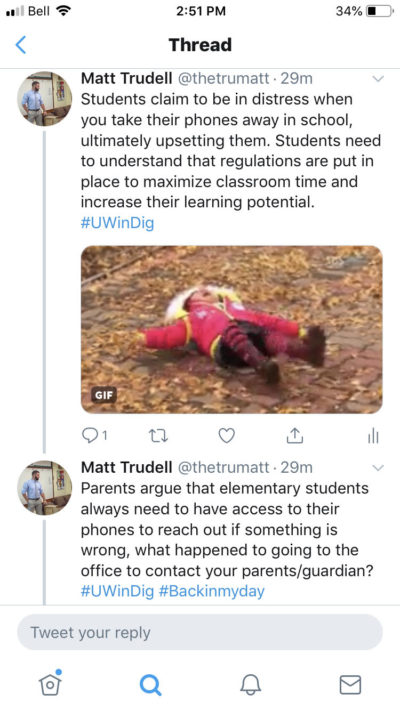
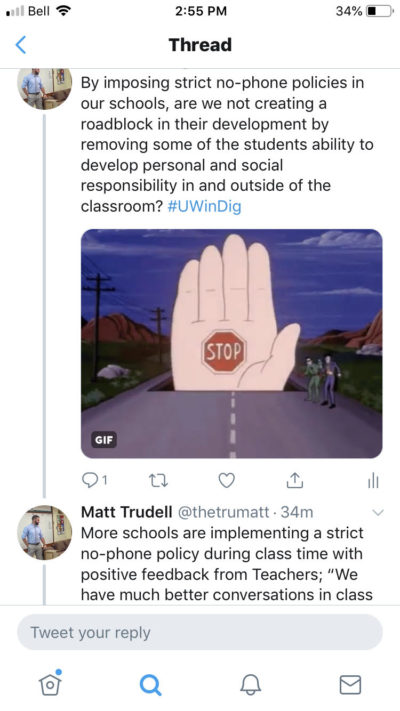
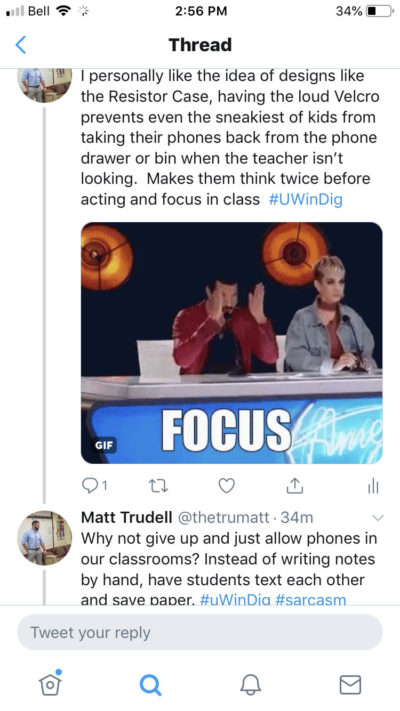
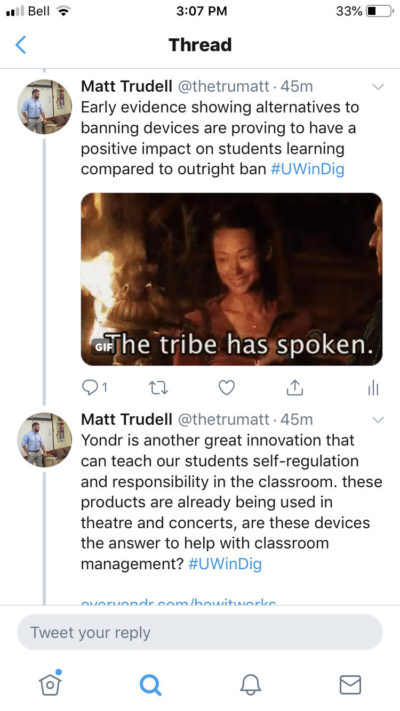

 I know I was appalled when the Screen time application was installed on my IPhone. If we don’t restrict children’s use of cellphones at the elementary level for at least some duration of the day, while many of them have no time limits at home, how dependent will this generation be on their devices when entering the work force? Looking back, this is part of the reason I felt like a ban was necessary to begin with; we are becoming too reliant on our devices, however, by implementing self-regulation methods and giving the students a chance to be instrumental in their own learning, we can assure the next generation of youth are prepared and cognizant of their use of devices.
I know I was appalled when the Screen time application was installed on my IPhone. If we don’t restrict children’s use of cellphones at the elementary level for at least some duration of the day, while many of them have no time limits at home, how dependent will this generation be on their devices when entering the work force? Looking back, this is part of the reason I felt like a ban was necessary to begin with; we are becoming too reliant on our devices, however, by implementing self-regulation methods and giving the students a chance to be instrumental in their own learning, we can assure the next generation of youth are prepared and cognizant of their use of devices.
